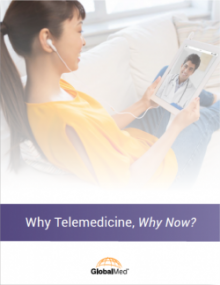
We talk a lot about telemedicine bringing care to rural areas. From the specialist shortage to the raging opioid epidemic, many remote communities and small towns just don’t have the healthcare resources their residents need. But even in these discussions, there’s a population that doesn’t get as much attention in the telemedicine world – yet they are some of virtual care’s earliest adopters and biggest proponents. We’re talking about Native Americans.
Many Native American tribes face the same healthcare challenges as anyone else. Provider shortages? Check. Months-long wait times for appointments or long trips for specialty care? Check. But they can also face specific challenges like atypically high suicide rates, substance use disorders and disproportionate rates of diseases like diabetes and kidney disease. Care can be tough to find on remote reservations or in tribal facilities with limited clinical resources. That’s why many tribes are using telemedicine to bring sophisticated care to their communities – and they’re having incredible success.
Extending Culturally Sensitive and Specialty Care
Providers sometimes assume that Native American culture, which tends to prefer face-to-face interactions, won’t embrace telemedicine. But it’s now a staple in many tribes. Indian Health Services (IHS), an agency in the U.S. Department of Health and Human Services, provides care delivery for approximately 2.6 million Native Americans in more than 574 tribes. Other tribes use their own funding to launch community clinics. Both integrate virtual care into their efforts to offer high-quality, culturally sensitive health services.
Currently IHS and tribal clinics use telehealth for a range of disciplines: behavioral health, dermatology, cardiology, maternal health, nephrology, rheumatology, endocrinology, infectious diseases and more. But the benefits go beyond the clinical. Medical transportation costs for patients in the northern plains, desert southwest, Alaska and other isolated areas can be extensive for a financially struggling population. In one year, a telebehavioral health program allowed IHS patients to avoid more than 500,000 miles of travel, which saved them more than $305,000 and more than 16,450 hours of work or school time.
Improving Outcomes Across America
These life-changing telecommunications programs typically involve collaboration with hospitals, academic medical centers and community-based services. A few projects include:
- The Care Beyond Walls and Wires™ (CBWW) remote monitoring program, which targeted patients suffering from chronic disease in remote Native American reservations. The program monitored patients’ vital signs, weight, and pulse oximetry for impressive outcomes: readmissions dropped by 44 percent, patients were hospitalized 64 percent fewer days, and hospital charges reduced by $92,000 per patient.
- The IHS-Joslin Vision Network Teleophthalmology Program, which screened IHS patients across the country for diabetic retinopathy, the leading cause of blindness in patients with diabetes. Because diabetes causes damage to blood vessels in the eyes, Native Americans’ high rate of diabetes increases their risk of vision loss – and they may be unaware of that risk until permanent damage has occurred. The program used telemedicine to connect patients to annual diabetic eye examinations and treatment to avoid blindness. The result: a significant decrease in diabetes-related vision loss.
- The South Dakota Health Care Solutions Coalition, which uses virtual care to support IHS emergency departments and increase access to primary and specialty care. Currently the coalition uses telemedicine at its facilities in all Great Plains Areaservice units, bringing care to 130,000 underserved American Indians and Alaska Natives who would otherwise need to travel long distances for care.
If you’re wondering how GlobalMed plays into this, the answer is that multiple tribes across America use our solutions:
- In Arizona, Navajo tribes Pinon, Kayenta and Shonto has created virtual programs in collaboration with Flagstaff Medical Center; the Havasupai use our stations in their clinics at the bottom of Grand Canyon.
- The largest reservation in the U.S. has deployed GlobalMed across almost a dozen clinics for specialty care in San Bernardino, California; their programs have decreased no-shows, increased adherence and improved outcomes.
- The Pine Hill Health Center Medical Department in New Mexico, serving the remote Ramah Navajo tribe, is accessible only by dirt roads – and their GlobalMed X-ray machine is the only X-ray machine for hundreds of miles. The clinic also uses our ClearProbe® ultrasound probe, ClearSteth® stethoscope and TotalExam® 3 camera to help patients receive remote consults for cardiology, dermatology and other specialties without needing to leave the reservation.
A Healthier Future for Native Americans
As with other communities, the benefits of expanding tribes’ access to care extend beyond each individual patient. More sophisticated and immediate care can help entire families and create healthier communities that can improve the tribe’s educational levels and economic prospects. Telemedicine is a game changer for everyone, but its benefits are often most dramatic for those with the most need.


I have been a emergency physician for 50 years. I am currently doing urgent care. I trained in internal medicine and I worked at a community health center for 30 years part time and internal medicine. I live in Massachusetts I would like to explore the possibilities of doing telemedicine for the Indian health service. I see that you are supplying some of those services. I would like to speak with someone about the possibility of working with you. Please have someone call me at their convenience my phone is 508-328-8573.
I read a lot of posts but the topic covered in this is the most comprehensive & helpful. This is really wonderful post. I would definitely recommend it to others. Thank you for sharing this valuable information with us.